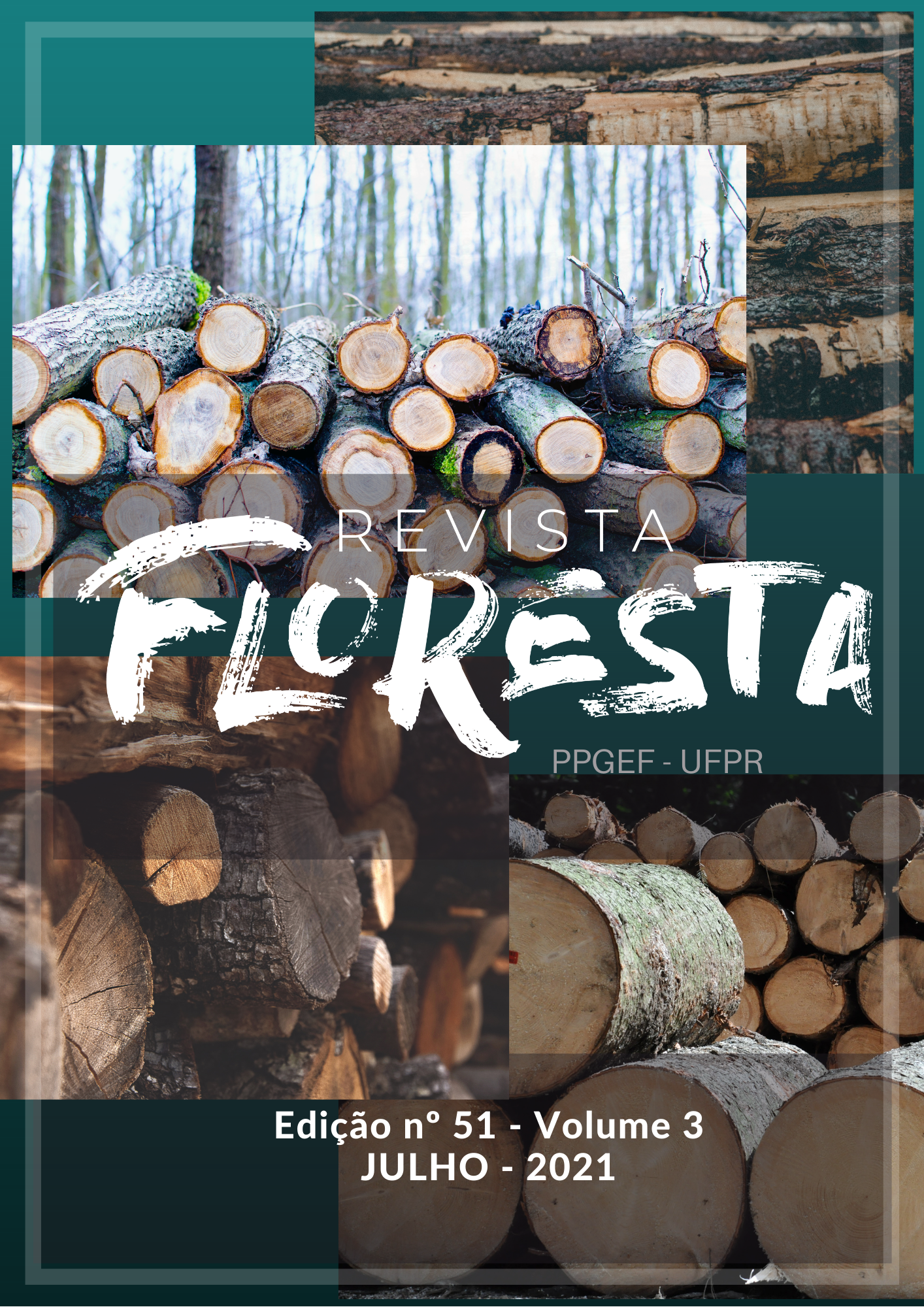SUBSTRATES AND INDOLE-3-BUTYRIC ACID IN MINI-CUTTINGS ROOTING OF Carya illinoinensis (WANGENH) K. KOCH
DOI:
https://doi.org/10.5380/rf.v51i3.72466Palavras-chave:
plantlets, pecan, asexual propagation, uniformityResumo
Mini-cutting technique of tree species is an effective method of maintaining desirable features of plant matrices and uniformity. The objective of the present research was to determine substrate and concentration of indolebutyric acid (IBA) more suitable for mini-cuttings of Carya illinoinensis rooting. The experiment was carried out in a greenhouse with mist, from February to May 2018. The used experimental design was in blocks with a factorial arrangement of 3 x 5, in which three substrates were tested: carbonized rice husk, vermiculite and perlit; and five IBA concentration : 0, 2,000, 4,000, 6,000 and 8,000 mg L-1. The mini-cuttings were apical, produced from seedlings, with eight months of age. Mini-cuttings were made with two leaves cut in half and 8 to 10 cm in length. The use of IBA influenced results obtained with all substrates, except for the variable number of roots, in which only IBA effect was observed. However, higher results were obtained with IBA uses together with substrate carbonized rice husk, obtaining estimated maximum point of 91% of rooted mini-cuttings with 3,957 mg L-1 IBA concentration. For other evaluated variables, except root numbers, it was also observed superior results close to 4,000 mg L-1 IBA concentration with substrate carbonized rice husk. Results indicate the possibility of Carya illinoinensis propagation by mini-cutting technique and as an alternative for this specie plantlets production.Downloads
Publicado
Como Citar
Edição
Seção
Licença
Direitos Autorais para artigos publicados nesta revista são do autor, com direitos de primeira publicação para a revista. Em virtude da aparecerem nesta revista de acesso público, os artigos são de uso gratuito, com atribuições próprias, em aplicações educacionais e não-comerciais.A revista, seguindo a recomendações do movimento Acesso Aberto, proporciona acesso publico a todo o seu conteudo, seguindo o principio de que tornar gratuito o acesso a pesquisas gera um maior intrcambio global de conhecimento.
Conteúdos do periódico licenciados sob uma CC BY-NC-SA 4.0



